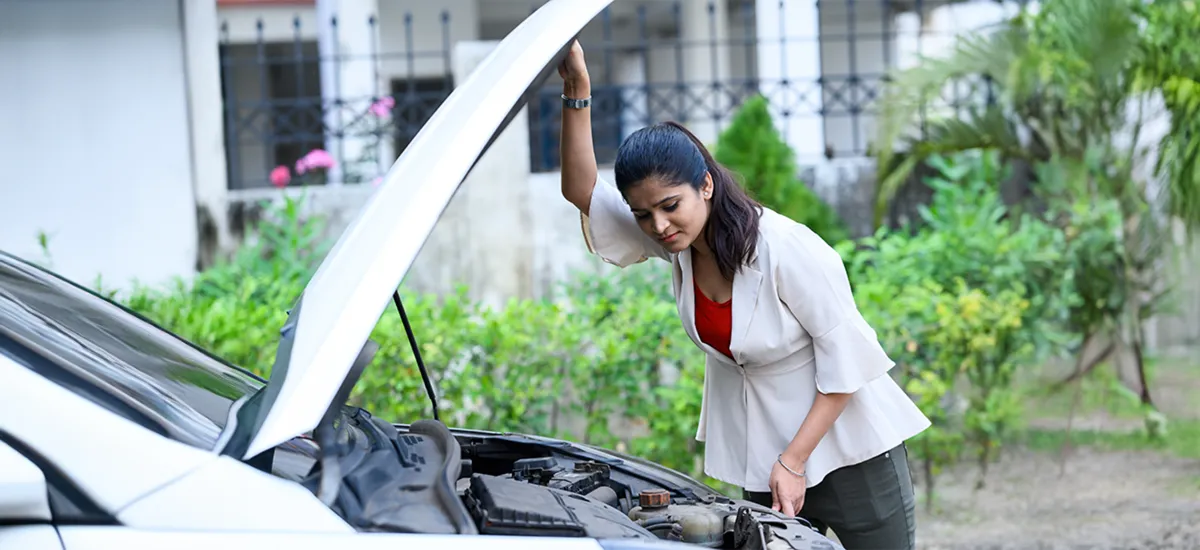Bringing home a new car is a big moment — the excitement, the sparkle of fresh paint, the thrill of something that’s all yours. But before you turn the key and drive off, there’s one simple step you don’t want to skip: checking the car properly. It might be brand new, but that doesn’t always mean it’s perfect. A quick, careful look — called a Pre-Delivery Inspection (PDI) — can help you catch small issues before they become big problems. After all, you'd rather find a scratch at the showroom than on your first drive, right?
Read on to know what PDI is, why it matters, and access a detailed car PDI checklist to help you inspect your new vehicle like a pro.
What is a Pre-Delivery Inspection (PDI)?
Pre-Delivery Inspection, or PDI, is a comprehensive check conducted on a new car before it is delivered to the customer. The purpose of PDI is to ensure that the vehicle is in perfect condition and meets the manufacturer's quality standards.
During the PDI process, trained technicians thoroughly inspect the car inside and out. They check for any defects, damage, or missing components. The inspection covers everything from the car's exterior and interior to its mechanical, electrical, and electronic systems.
The PDI check is typically performed by the dealership's staff before the customer takes delivery of the vehicle. However, as a buyer, you have the right to conduct your PDI to ensure the vehicle matches the specifications and condition agreed upon with the seller.
Why is a PDI important?
Conducting a thorough PDI is essential for several reasons:
· Identifying defects:
A PDI helps detect any manufacturing defects or damage that may have occurred during transportation, allowing the dealership to rectify these issues before you take delivery of the car.
· Ensuring optimal performance:
During the PDI, technicians will check and adjust various components to ensure your car performs at its best from day one.
· Avoiding future problems:
By identifying and addressing issues early on, a PDI can help prevent potential problems down the line, saving you time and money on repairs.
· Peace of mind:
Knowing that your new car has undergone a comprehensive inspection and is in perfect condition can provide you with peace of mind and enhance your overall ownership experience.
The ultimate car PDI checklist
To help you navigate the PDI process, we have compiled a comprehensive car PDI checklist. Use this checklist as a guide when inspecting your new car:
Exterior checks
1. Paint and body: Check for any scratches, dents, or uneven paint finish on the car's exterior.
2. Doors, hood, and trunk: Ensure they open and close smoothly, and the gaps are even.
3. Windshield and windows: Look for any cracks or chips in the glass.
4. Lights: Test all exterior lights, including headlights, taillights, and turn signals.
5. Tyres: Check the tyre pressure and ensure the tread depth is adequate.
Interior checks
1. Seats: Inspect the upholstery for any tears, stains, or defects. Ensure all seats are properly installed and adjust smoothly.
2. Dashboard and controls: Test all buttons, switches, and knobs to ensure they function correctly.
3. Infotainment system: Check the audio, navigation, and other features of the infotainment system.
4. Air conditioning: Ensure the air conditioning system works properly and the vents are free from obstructions.
5. Carpets and mats: Check for any stains or damage on the carpets and floor mats.
Mechanical checks
1. Engine: Start the engine and listen for any unusual noises or vibrations.
2. Transmission: Test the transmission by shifting through all gears, including reverse.
3. Brakes: Check the brake pedal for proper resistance and ensure the car stops smoothly.
4. Steering: Ensure the steering wheel is centred and the car tracks straight.
5. Suspension: Check for any unusual bouncing or rattling when driving over bumps.
Electrical and other checks
1. Power windows and locks: Test all power windows and locks to ensure they function correctly.
2. Mirrors: Adjust the mirrors and ensure they are properly aligned.
3. Wipers: Test the windshield wipers and washer fluid spray.
4. Charging ports: Check the functioning of USB ports and other charging outlets.
5. Instrument cluster: Ensure all gauges and warning lights are working correctly.
What to do if you find issues during the PDI?
If you identify any issues during the PDI check, bring them to the attention of the dealership's staff immediately. The dealership should rectify the problems before you take delivery of the vehicle. If the issues are significant or cannot be resolved to your satisfaction, you may consider rejecting the delivery and requesting a replacement vehicle.
It is essential to document any issues you find during the PDI. Take photos or videos of the problems and make sure the dealership acknowledges them in writing. This documentation will be crucial if you need to escalate the matter or seek legal recourse in the future.
Final thoughts
A Pre-Delivery Inspection (PDI) is a crucial step in the process of buying a new car. It ensures that you are getting a vehicle that meets your expectations and is free from any defects or issues. By following the comprehensive car PDI checklist provided in this article, you can inspect your new car like a pro and identify any potential problems before taking delivery.
Remember, conducting a PDI is your right as a consumer. Do not hesitate to take the time to thoroughly inspect the vehicle and bring any issues to the dealership's attention. A little extra effort during the PDI stage can save you from a lot of headaches and expenses down the road. If you have any further questions about the PDI process or need assistance with your car insurance, feel free to reach out to our experts at Generali Central Insurance. We are here to help you navigate the exciting journey of owning a new car with confidence and peace of mind.
FAQs
1. What is the PDI full form in car insurance?
PDI full form is Pre-Delivery Inspection in the context of car insurance and new car purchases.
2. How long does a PDI take?
A typical PDI takes between 30 minutes to an hour, depending on the complexity of the vehicle and the thoroughness of the inspection.
3. Can I perform a PDI myself?
While you can conduct a basic visual inspection yourself, it is recommended to have a trained technician perform the PDI to ensure all aspects of the car are thoroughly examined.
4. What if the dealership refuses to address issues found during the PDI?
If the dealership refuses to address legitimate issues discovered during the PDI, you may need to escalate the matter to the manufacturer or consider seeking legal advice.
5. Is a PDI covered under warranty?
Yes, any issues identified during the PDI should be covered under the manufacturer's warranty, as the inspection is conducted before you take delivery of the car.




















